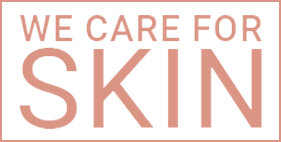Acne vulgaris or acne is a universal condition and the third most prevalent skin problem worldwide. It is safe to say that most of us have at one point experienced acne, except for the few lucky ones who never had to wake up with a red bump on their face. Acne mainly affects younger people during puberty but can persist through adulthood.
The adverse effects of acne transcend beyond the superficial. Aside from the symptomatic discomfort, acne causes significant damage to someone’s confidence. It can lead to psychosocial and emotional distress and potential psychiatric problems such as depression and suicidal ideation.
Causes and Development of Acne
Understanding the causes and stages of the development of acne can reduce the stigma around the condition and provide a good foundation for optimal treatment.
The formation and development of acne is an interplay of various factors, including overproduction of sebum, hyperkeratinization of the skin cells, bacterial infection – specifically Cutibacterium acnes (previously called Propionibacterium acnes), and inflammation. There are usually four stages in the development of acne, as outlined below.
-
Sebum overproduction
Sebum is a natural product of our body. Its primary function is to lubricate the hair follicles in our skin and act as a barrier to prevent moisture loss. Factors like hormone dysregulation (specifically androgen) and genetics contribute to the overstimulation of sebaceous glands causing them to produce excess sebum.
-
Hyperkeratinization of skin cells
Similarly, hormone dysregulation can cause hyperkeratinization or thickening of the epidermis (outermost layer of the skin). It then leads to blockage of the sebaceous duct trapping the sebum inside the pores.
-
Cutibacterium acnes
Cutibacterium acnes is a part of our normal flora, which means bacteria that normally live in our body but cause no harm. In this case, C. acnes live in the skin and loves to feed on the triglycerides found in sebum. The overproduction and subsequent trapping of sebum in the pores provide a viable environment for C. acnes to thrive.
-
Inflammation
The trapped sebum, dead skin cells, and bacteria in the pores are called comedones. When it ruptures or pops, they cause the skin to be inflamed. That is why pimples are often bumpy, red, and contain white fluid - the sebum and byproducts caused by C. acnes feeding on them. The rupture of the pimple can trigger the body’s inflammatory response and cause scarring and discoloration of the skin, which are different problems on their own.
Acne Myths
The complicated nature of acne leads to many myths surrounding this skin condition. These myths often cause acne sufferers to self-treat or self-medicate and often resort to unproven and sometimes dangerous treatment options.
-
Sleeping late causes acne
This is probably the most popular belief when it comes to acne. Sleeping late does not directly cause the formation of acne. The term “sleeping late” is also subjective since individuals have different body clocks and sleep-wake rhythms.
To answer the question, “does sleeping late cause acne”? The short answer is no. But not having enough sleep definitely plays a role.
Lack of sleep can cause stress and hormone dysregulation, specifically cortisol. This spike in cortisol levels can lead to inflammation and increased sebum production, which, as discussed above, contributes to acne development.
-
Eating sweets and dairy causes acne
Eating any food in excess can have a lot of adverse effects, including sweets and dairy. Studies have shown that eating excessive sugar and dairy is linked to a higher incidence of acne. However, this does not necessarily mean that one needs to restrict their diet of sweets and dairy. At the end of the day, moderation is still the key.
-
Makeup causes acne
Most makeup products in the market today are tested before being sold. However, different skin types react to different makeup ingredients; thus, the possibility of makeup clogging the pores is still possible. When choosing makeup, choose non-comedogenic ones to avoid having clogged pores and the risk of exacerbating existing acne.
-
Blackheads are caused by dirt
Contrary to popular belief, dirt trapped in the pores does not cause blackheads. Comedone, or the trapped sebum, dead skin cells, and bacteria in the pore, darkens when the outer part of it is oxidized or exposed to air.
-
Only teenagers get acne, and it can resolve as you age
Acne usually starts during puberty. However, it can also affect even adults. Acne is also self-limiting, meaning it could resolve on its own, but the risk of it getting worse and leaving deep scars are greater when left untreated.
Acne Treatments
A quick internet search for acne treatment will bring up a plethora of results, from traditional remedies and natural products to light therapy machines and one-time shots of steroids.
Because of the different factors contributing to its development, treating acne requires a holistic approach. It is not a one-product, one-time use scenario. Treatment options are often used in combination with other products and require consistent use before having a noticeable result. Treatment options for acne are outlined below.
-
Topical Treatments
Topical agents are the first-line treatment for acne. Benzoyl peroxide is the most widely used topical agent. It works by releasing free radicals to kill C. acnes bacteria as well as eliciting a comedolytic effect or preventing the formation of comedones.
Topical antibiotic agents used for acne include clindamycin and erythromycin. They work by inhibiting C. acnes and have indirect anti-inflammatory effects. They are often used in combination with benzoyl peroxide.
Retinoids have also demonstrated safety and efficacy in the treatment of acne. Retinoids are vitamin A derivatives that work by increasing the turnover of skin cells and have anti-inflammatory effects. Agents include adapalene, tazarotene, and tretinoin. They are highly effective, but their use is limited by side effects such as peeling, redness, and irritation.
-
Procedural Therapies
Procedures for acne include comedone extraction, chemical peels, laser treatment, and light therapy. Their effects vary and are anecdotal at the moment, especially for the newer laser and light therapy options. A 2018 systematic review of light therapies showed mixed results in their role in acne treatment. These modalities are not yet sufficiently studied as a first-line treatment but are promising options for acne treatment.
-
Oral Medications
Antibiotics have always been a mainstay in the treatment of moderate to severe cases of acne. Their efficacy is mainly attributed to their antibacterial and anti-inflammatory activities. However, the emerging problem of antibacterial resistance and the recent evidence suggesting that acne is an inflammatory rather than an infectious condition has resulted in re-evaluating current treatment options.
Hormonal therapy is another excellent treatment option for acne, especially for women. They work by targeting the role of androgen in the development of acne. Combination oral contraceptives include drospirenone (Yaz), norgestimate (Ortho Tri-Cyclen), and norethindrone acetate (Estrostep Fe). Spironolactone, a diuretic drug used in hypertension, is currently gaining attention in the treatment of acne. It is used in combination with other oral therapies and topical treatments.
Isotretinoin has been around since 1982 and is considered the gold standard in acne treatment. Its efficacy is attributed to its ability to affect the stages of acne development:
-
Reducing sebum production by up to 90% after six weeks of use
-
Normalizing the rate of skin cell hyperkeratinization
-
Reducing proliferation of C. acnes
-
Anti-inflammatory activity
Acnetrex is the most popular isotretinoin brand available in the country. It is available in 10 mg or 20 mg depending on the dosage needed. It should be used under a dermatologist's supervision and is not suitable for pregnant or lactating women.
Vitamins and supplements like zinc, vitamin C, vitamin E, chromium, and many others have also shown their potential as an adjunct therapy in the reduction and even prevention of acne. These vitamins and supplements can be taken individually, but some brands like Skizin combine these ingredients in one product. It also contains Dunaliella salina extract, a potent source of beta-carotene and vitamin B12. Beta carotene is transformed in the body into vitamin A which is helpful in acne treatment.
References
-
Baldwin, H.E. & Marson, J.W. (2019). An overview of acne therapy, part 1: Topical therapy, oral antibiotics, laser and light therapy, and dietary interventions. Dermatologics Clinics, 37(2), pp. 183-193. https://doi.org/10.1016/j.det.2018.12.001
-
Baldwin, H.E. & Marson, J.W. (2019). An overview of acne therapy, part 2: Hormonal therapy and isotretinoin. Dermatologics Clinics, 37(2), pp. 195-203. https://doi.org/10.1016/j.det.2018.12.002
-
Bhate, K. & Williams, H.C. (2013). Epidemiology of acne vulgaris. British Journal of Dermatology, 168, pp. 474-485. https://doi.org/10.1111/bjd.12149
-
Brajac, I., Bilić-Zulle, L., Tkalčić, M., Lončarek, K. & Gruber, F. (2004). Acne vulgaris: myths and misconceptions among patients and family physicians. Patient Education and Counseling, 54(1), pp. 21-25. https://doi.org/10.1016/S0738-3991(03)00168-X
-
Markovic, M., Soldatovic, I., Bjekic, M. & Sipetic-Grujicic, S. (2019). Adolescents’ self-perceived acne-related beliefs: from myth to science. Anais Brasileiros de Dermatologia, 94(6), pp. 684–690. https://doi.org/10.1016/j.abd.2019.02.005
-
Tan, J.K.L. & Bhate, K. (2015). A global perspective on the epidemiology of acne. British Journal of Dermatology, 172, pp. 3-12. https://doi.org/10.1111/bjd.13462


